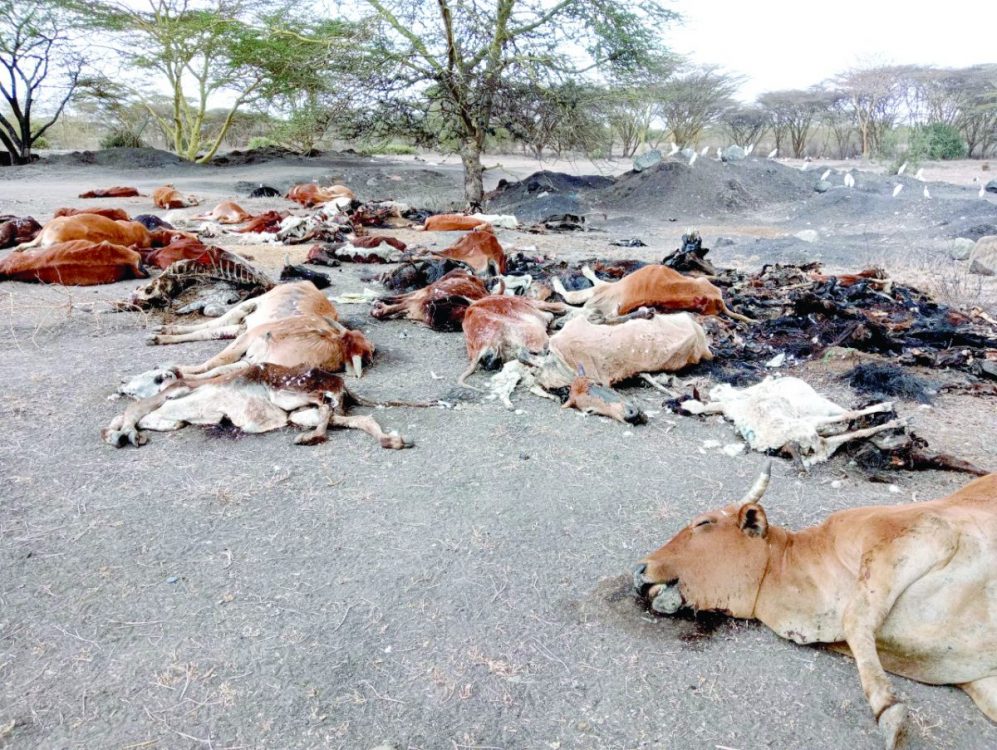Ruto likely to declare drought disaster, calls for rain prayers

President William Ruto is today expected to declare the ongoing drought and famine a national disaster.
The declaration, which is set to be made during a prayer rally at Nyayo National Stadium, comes at a time when the authorities have acknowledged that the situation is getting out of hand.
“I am really pleading with all of you no matter your religion that on Tuesday you kindly show up at Nyayo stadium or wherever you will be in your spare time. We pray for the current situation. We don’t want any more Kenyans to die because of drought. We will pray for rain,” the President said in a statement.
He added: “We have a lot of interventions like the construction of dams and the distribution of fertilisers but all these will not be possible if we don’t have rain.”
The announcement will come as a relief for leaders from the affected counties who have been pushing for the situation to be declared a disaster.
The leaders, representing the Frontier Counties Development Council and arid and semi-arid lands, said they have little resources to mitigate the effects of the prolonged dry spell. The most affected regions have not received rain for several seasons.
Mitigation measures
Last week, the National Drought Steering Committee warned that Kenyans should brace for tougher times ahead which may last until October.
The chair of the committee Peter Ndegwa said the number of those facing starvation may soon reach six million up from 4.3 million currently.
“The sad reality is that the current situation is here to stay,” said Ndegwa.
The committee has so far raised Sh650 million towards mitigation measures and hopes to raise one billion by the end of February.
The Famine Early Warning Systems Network (FEWSNET) is also warning that the drought situation is worsening in the pastoral regions of the country.
According to FEWSNET, most water sources are drying up in many areas.
The report indicates that people are travelling on average three to 17 kilometers to access water, while livestock trek 10 to 33 kilometers to reach water points.
“Livestock milk production, a key source of food and income, remains well below normal, with livestock producing from zero to 0.9 litres per household per day,” says the report on the ongoing drought situation in the Arid and Semi-Arid Lands (ASALs) in the counties.
Overall, the ongoing drought continues to severely hinder household access to food and income, resulting in widespread crisis,” it says.
Green produce
According to the report, in marginal agricultural areas of Kitui and Meru counties and in parts of Kilifi and Kwale counties, there are reports of crop failure following the below-average October to December short rains.
“Across the marginal agricultural areas, the maize crop is unlikely to reach maturity following the cessation of rainfall in late December and inadequate soil moisture to support growth,” the FEWSNET report warns.
A below-average harvest of green grams, cowpeas, and beans is also expected in most areas, a problem compounded by the early consumption of green produce, especially beans, which means that there could be little or nothing to harvest.
“Overall, households remain atypically reliant on market food purchases due to a lack of stocks from the below-average March to May 2022 season,” the report notes.
Last week, Deputy President Rigathi Gachagua revealed that Kenya lost livelihoods valued at Sh187 billion in the last year.
“We are in a crisis. No doubt, the world is bleeding from the impacts of climate change. Kenya is bleeding from the impact of climate change.
To demonstrate the impact of climate change, Kenya has consecutively missed five rain seasons. We are deep into one of the longest droughts in four decades,” he said.
The drought continues to worsen in 21 of the 23 arid and semi-arid counties.
This has been attributed to the four failed consecutive rain seasons and the late-onset and poorly distributed 2022 short rains.










